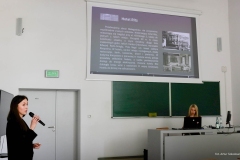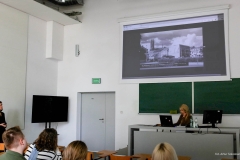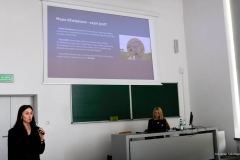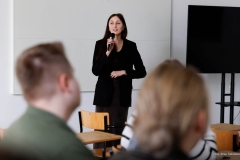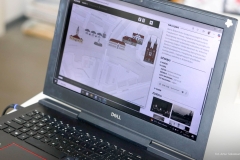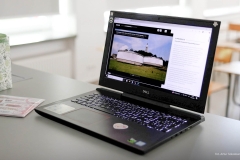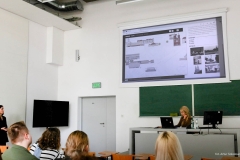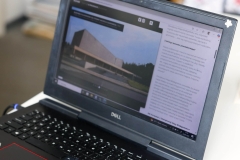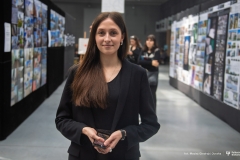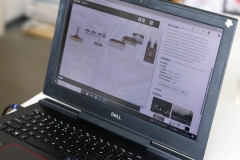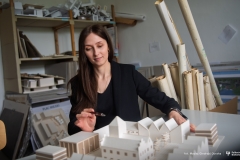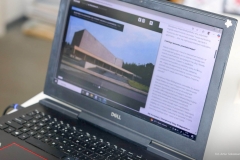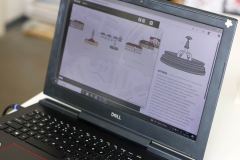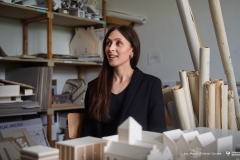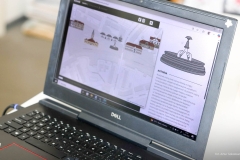The Sound Map of Bialystok – a multimedia project by students and staff of Bialystok University of Technology for residents and tourists
13-06-2025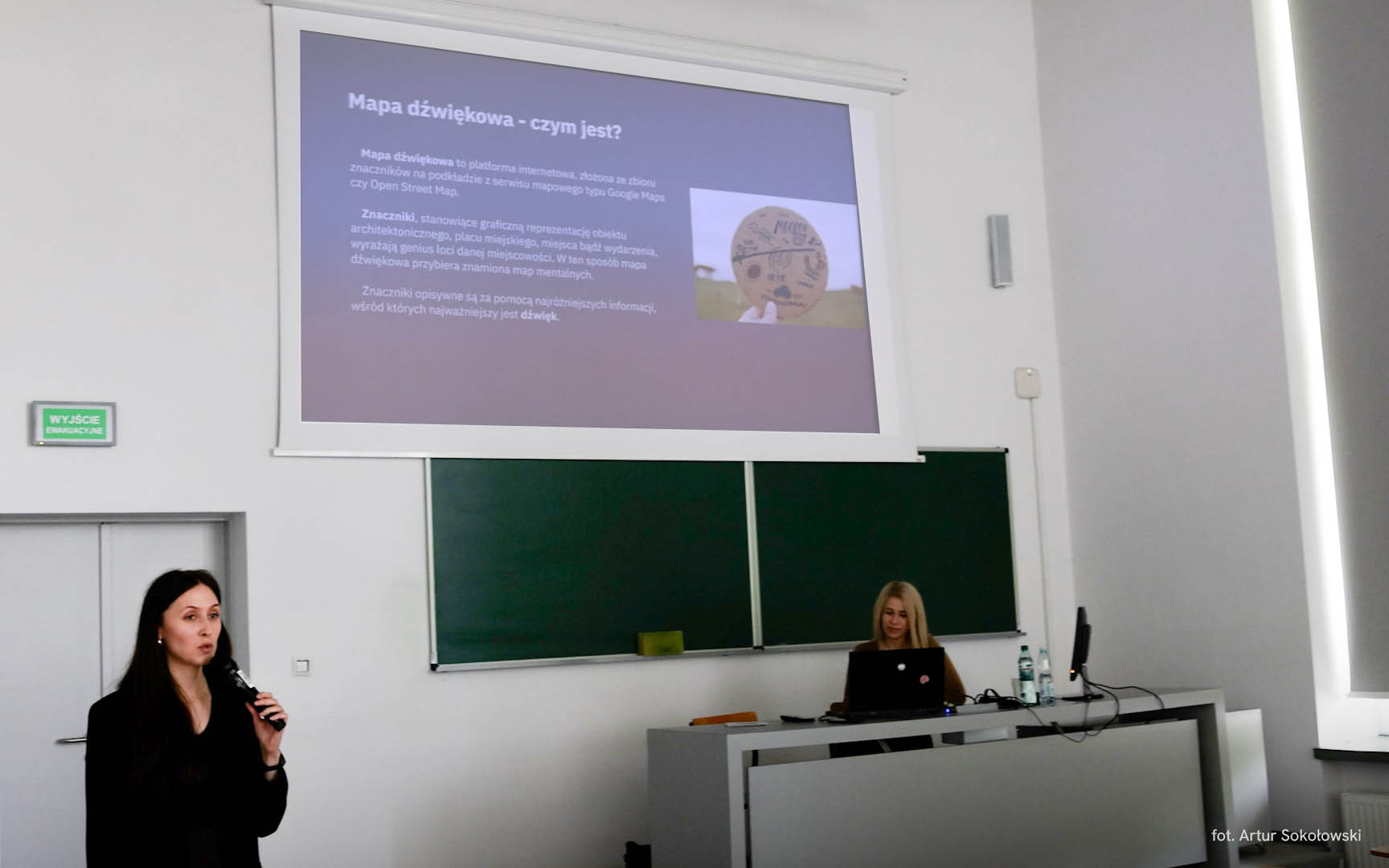
The Sound Map of Bialystok – a multimedia social project created by students and staff from the Faculty of Architecture and the Faculty of Computer Science of Bialystok University of Technology – documents and presents the life of the city through the sense of hearing.
Listen to Bialystok
Can Bialystok be heard? Can its history be discovered through sound? Is it possible to return to iconic places and memories and feel the current atmosphere of the city? Now it is.
The Sound Map of Bialystok helps recreate the cityscape through the sounds of contemporary events and places, as well as the history of past locations. The map is an interactive, publicly accessible online platform – check it out!
This digital map includes 90 locations: architectural landmarks, cultural event venues, everyday life scenes, and even traffic. The town hall bugle call, a fragment of the Up To Date Festival, stories about the Ritz Hotel or the construction of the Aleksander Węgierko Drama Theatre– all of these are available to users, who can also view archival photographs linked to specific locations.
– The Sound Map of Bialystok was created to showcase our city from a new perspective – says one of the project’s creators, Klaudia Bagińska, MSc, Eng, Arch., from the Department of Housing Architecture and Urban Planning at the Faculty of Architecture of Bialystok University of Technology. – The map contains pins and markers that allow users to virtually explore both well-known and lesser-known parts of Bialystok. These are important places for the city and its residents, who recall them in their memories or proudly show them to their families. You can listen to the ticking of the clock in the gate of the Branicki Palace, ducks waddling around the palace, or the chatter of students on the campus of Bialystok University of Technology. The map reflects the identity of Bialystok, of which we should be proud.
Experience the city in a different way
The Sound Map of Bialystok allows you to experience the life of the city in a new way. It may be seen as a promotional project supporting tourism – but not only that. It is an initiative that addresses the needs of many groups, including people with disabilities, sensory impairments, mobility issues, or older adults.
– This project is also aimed at people with disabilities. As a multi-sensory website, the sound map allows people who have health or mobility challenges to explore the city. It may also be interesting for senior residents of Bialystok, who can revisit the Bema market and hear how lively and bustling it once was.
Creating a polyphonic archive of a city is a trend followed by many local governments. Similar sound maps exist in Kraków, Gdynia, and Wrocław. A nationwide sound map of Poland is also in development.
With its rich ethnic, linguistic, and religious heritage, Bialystok now also has its own sound representation.
– The sound map reveals the beautiful, yet sometimes difficult history of our city. It touches on various spaces, which I hope will strengthen the identity of Bialystok’s residents – explains Klaudia Bagińska, a graduate of Architecture and Spatial Planning at two faculties of Bialystok University of Technology: Architecture, and Civil Engineering and Environmental Sciences.
Scientific research as inspiration
The originator and coordinator of the Sound Map of Bialystok is Assoc. Prof. Agnieszka Duniewicz, DSc, PhD, Eng, Arch., Head of the Department of Architectural Design and History of Architecture at the Faculty of Architecture of Bialystok University of Technology.
The idea emerged in 2021, inspired by research conducted at Bialystok University of Technology on sound propagation in architecture and the impact of sound on people with disabilities. Another area developed during the project was machine learning and the recording and analysis of binaural sounds – those perceived similarly to how the human hearing system captures sound.
The research leading to the creation of the sound map involved a multidisciplinary team of researchers and students from Bialystok University of Technology, as well as external researchers.
Participants came from various scientific, cultural, and artistic fields – urban planners, landscape architects, architects, interior designers, engineers, acousticians, anthropologists, cultural experts, disability specialists, museum professionals, and musicologists.
The aim of the research was to demonstrate the potential of sound signals as a component of architecture that enables a fuller experience of architectural space.
A unifying project
The extensive academic material collected by researchers at Bialystok University of Technology formed the foundation for the project titled The Sound Map of Bialystok and was used to create a multimedia sound map for public use, presenting both the old and modern Bialystok. The project involved staff and students from the Faculty of Architecture and the Faculty of Computer Science at Bialystok University of Technology. They collaborated with numerous experts and cultural institutions such as the Historical Museum (a branch of the Podlaskie Museum), Białystok Cultural Centre, Sybir Memorial Museum, and Polish Radio Bialystok, which shared excerpts from past broadcasts, including May Day parades on Maria Skłodowska-Curie Street.
The academic supervisors of the project The Sound Map of Bialystok were:
- Assoc. Prof. Agnieszka Duniewicz, DSc, PhD, Eng, Arch. (Faculty of Architecture)
- Assoc. Prof. Ireneusz Mrozek, DSc, PhD, Eng. – Vice-Dean for Development and Cooperation at the Faculty of Computer Science
- The project team was appointed by Ordinance No. 52 12025 of the Rector of Bialystok University of Technology on 2 May 2025 and included:
- Assoc. Prof. Agnieszka Duniewicz, DSc, PhD, Eng, Arch. (Project originator, FA)
- Assoc. Prof. Ireneusz Mrozek, DSc, PhD, Eng. (Chair of the team, FCS)
- Assoc. Prof. Agnieszka Malinowska, DSc, PhD (FCS)
- Assoc. Prof. Sławomir Zieliński, DSc, PhD, Eng. (FCS)
- Klaudia Bagińska, MSc, Eng, Arch. (FA)
The project has been ongoing since 2021 and received funding from a subsidy granted by the Minister of Science and Higher Education.
The map was presented at the International Scientific Conference DARe at the Faculty of Architecture of Bialystok University of Technology, which explored digital tools in 21st-century architecture, as well as during the 21st Podlasie Festival of Science and Art with Bialystok University of Technology.
Memory fades, but sound remains
Listen to Bialystok. Visit: https://dzwiekowamapabialegostoku.pb.edu.pl/
Find a site that interests you and explore the city!
The Sound Map of Bialystok is constantly expanding. If you have sound recordings or photographs, contact the creators of the map at: dzwiekowamapabialegostoku@wp.pl
Help complete the missing locations:
- Flower shops
- Bus station on Jurowiecka Street
- Amphitheatre
- Krąg entertainment club
- Koszałek
- The Great Synagogue
- Pewex
- Jagiellonia’s hall and stadium on Jurowiecka Street
by mz
Feel free to view the photo gallery:
